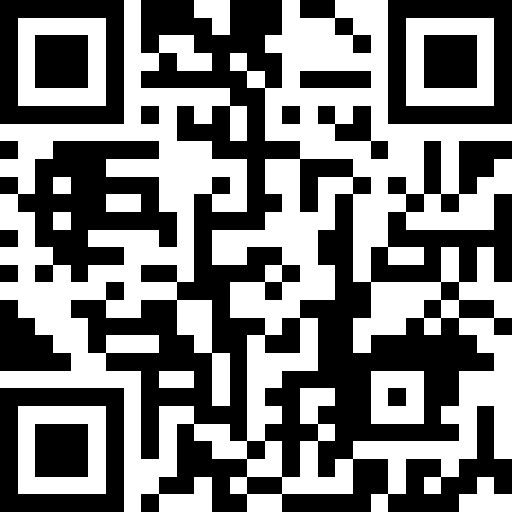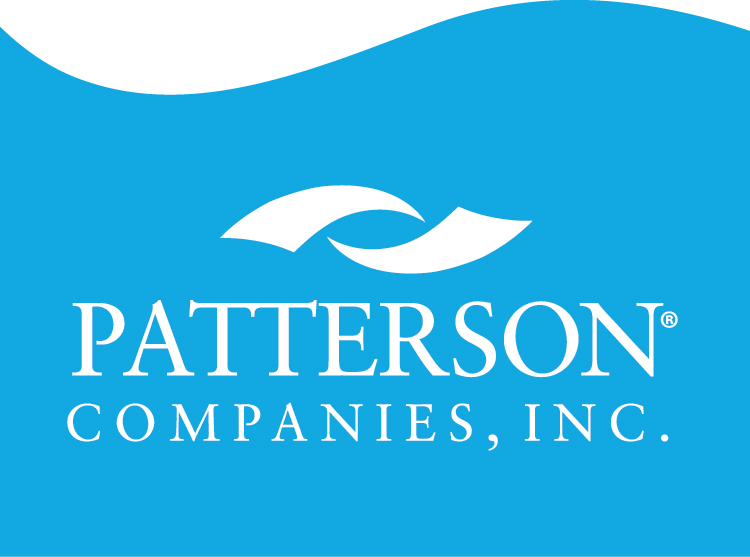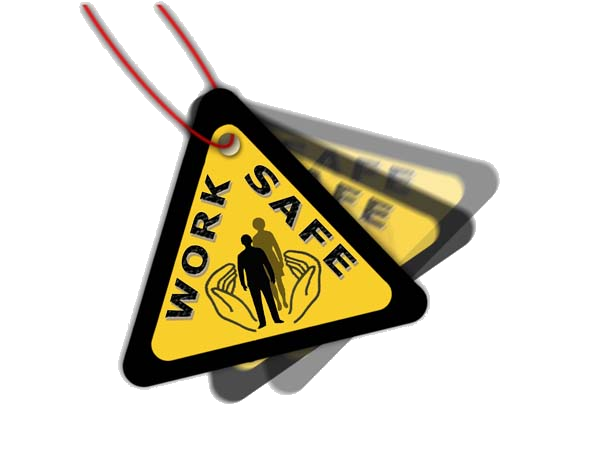Title Page
-
Site conducted
-
Conducted on
-
Prepared by
-
Location
Access Control Management
Qualification/Document/Record
-
Personnel resignation management<br><br>A management system is in place to ensure that employees return their employee ID cards, access cards, keys, access rights, system rights, and other sensitive information before resignation. Change the relevant access passwords and locks after employees' resignation in key positions.
Access Security
-
Precautions training for visitor <br><br>Before entering the warehouse, the visitors must inform them of the safety issues. It is prohibited to bring fires and personal packages (except approved laptops) into the warehouse. A storage cabinet is provided at the entrance of the warehouse for the entry personnel to store personal belongings.
-
Guest registration management <br><br>Visitor management process and regulations should be posted at the entrance. All visitors must register with a valid certification, and be issued with a temporary visitor card. Visitor records must be kept for at least 90 days (or comply with local laws and regulations). Visitors can enter the warehouse only when accompanied by security guards or Huawei employees.
-
Worker entry management <br><br>The entrance for warehouse staff is controlled by security guards or electronic access devices 24*7 a week, and access records are available. All personnel working in the warehouse should wear certification , such as staff cards, temporary access certificates, etc.
Dangerous Goods Management
Storage/Picking Area
-
Dangerous goods storage <br><br>Dangerous goods must be stored on the floor area. It is prohibited to be store in the rack. Dangerous goods with damaged packages (refer to the national warehouse acceptance standards) are not allowed to be stored in warehouses.
-
Dangerous goods management label <br><br>There are obvious signs at the entrance and periphery of the dangerous goods storage area, indicating that dangerous goods are contained in the area, and the emergency handling measures are attached.<br>It is forbidden to unpack dangerous goods.
Equipment Security
Storage/Picking Area
-
Shelf Warning Signs <br><br>There are safety warning signs in the shelf area, including but not limited to: no climbing, wearing safety helmets when entering the rack area, warnings on unit load weight limit, etc.
-
Fan Safety <br><br>Do not place goods under the fans , and Do not set up office positions under the fans.
-
Forklift Battery Safety <br><br>The battery surface of the forklift is free of oil stains, the battery electrode protective cover is complete and not damaged, and the battery charging head and charging cable are intact and not damaged.
-
Forklift Sound and Light Alarm Device <br><br>Check whether the sound and light alarm device is normal for forklifts which installed with sound and light alarm device.
Fire Safety Management
Qualification/Document/Record
-
Fire safety owner and training <br><br>The warehouse has safety owners, safety officers, and safety supervisors. Routine fire hazard check and inspection records are available. Initial fire fighting training, fire evacuation drills, fire fighting publicity and education are provided for all warehouse personnel, and the records of these activities are kept.
-
Fire risk prevention <br><br>To prevent fire from the source, all fire-related operations which will create fire or fire spark must be applied and get approval in advance from Huawei ,and taking relevant fire prevention measures on site.
-
Electricity safety <br><br>The power distribution cabinet is managed by a special person, and the electric wires and electrical equipment are regularly checked and overhauled by the electrician with the qualification certificate, and maintenance records are kept.<br>A 0.5 m safety passage or maintenance space shall be reserved for electrical equipment such as power distribution cabinet and electrical circuit.
Fire/Electrical Facilities
-
Lighting fixtures safety <br><br>No exposed wires are allowed in the warehouse. All wires must be protected by metal pipes or non-combustible rigid plastic pipes. Electric facilities and equipment require sockets. It is prohibited to charge personal electric appliance.
-
Pantency of fire exits <br><br>It is prohibited to stack goods in the fire lanes , the safety exits , and the fire escapes of the evacuation stairs.
-
Fire safety warning <br><br>No-smoking, no-fire signs and fire safety exit signs shall be set up inside and outside the warehouse.
-
Electricity safety <br><br>High-power electrical equipment is not used in the reservoir area (the single electrical equipment exceeds 2000W); No more than 2 sockets can be used in series circuit, or total power is not more than 2000 watts.
-
Fire Extinguisher Configuration <br><br>Check whether the quantity of fire extinguishers in the warehouse reaches the standard (4 kg per 75 square meters on average). At least two fire extinguishers are configured at each storage location or comply with local laws .
-
Automatic fire alarm device <br><br>Warehouses larger than 2000 ㎡ should be equipped with automatic fire alarm system, sprinkler system and lightning protection device, and check whether the system is effective (functioning normally).
-
Power cable/strip safety <br>No exposed wires are allowed in the warehouse. All wires must be protected by metal pipes or non-combustible rigid plastic pipes. Electric facilities and equipment require sockets. It is prohibited to charge personal electric appliance.
-
Fire fighting equipment maintenance <br><br>The warehouse shall be equipped with fire fighting equipment within the validity period, indoor fire hydrant system (with normal water pressure) ; It is prohibited to stack goods within 1.4 m in front of the fire hydrant and fire extinguisher box (rack).
Goods Management
Fire/Electrical Facilities
-
Battery inventory management <br><br>Check whether batteries are managed in a separate storage space and no batteries expired.<br>Do not charge lithium batteries in the warehouse.
Storage/Picking Area
-
Dangerous goods management <br><br>The dangerous goods storage area must be separated from the general goods storage area at an interval of more than 2 m and clearly marked. If the "original packaging" is involved, the operation must be performed by the personnel with the dangerous goods operation certification. Take appropriate safety protection measures during loading and unloading. It is prohibited to store inflammable, explosive and chemical dangerous goods .
-
Cargo stacking specification <br><br>Ensure safety during material stacking and loading (The big/heavy goods should not lay on the top of small/light goods, and the number of stacking layers cannot exceed the limit. Goods should be stacked neatly. Materials should not be stacked outside the pallet size range.)
-
ESD and dustproof specification <br><br>Only basic warehousing services are allowed in regional warehouses, antistatic assembly, dustproof assembly, and simple loading tests are prohibited. Application and Approval is needed before restricted operaion.
-
Overhead placement requirements <br><br>The trays on the shelves are placed properly and do not exceed the beam by 10 cm. The pallets are not partially broken, deformed, loose, or missing.
-
Valuable goods management <br><br>The storage area of valuables and important materials shall be managed by a dedicated person and monitored by additional CCTV. All unpacking and distribution must be carried out in the designated area under the surveillance of cameras.
-
Outdoor storage of goods <br><br>Materials stored outdoors must comply with the 8S standard and be marked with clear and easy-to-identify locators/material labels.
-
ESD packaging requirements <br><br>Check whether ESD(Electro-Static discharge)-sensitive components (such as finished boards and optical templates) and materials with ESD requirements are packaged with ESD protection. Do not expose them.
Human Safety
Qualification/Document/Record
-
Forklift driver certification <br><br>The forklift driver must have the corresponding forklift driving qualification documents that comply with local laws and regulations.
-
Aerial work safety certification <br><br>The operator has the relevant operation qualification certificate for aerial work ( where there is a possibility of falling 1.8 m or more from the falling datum plane)
-
Manual handling of overweight goods <br><br>There are clear regulations on the scenarios for manual handling of overweight goods , and training records are provided. Auxiliary mechanical handling equipment is required if the operation is beyond the manual handling capability.
-
Forklift Maintenance <br><br>Forklifts, AGVs, climbing ladders and other equipment have maintenance and repair records. Forklifts with problems or safety risks are prohibited.
-
Accident emergency mechanism <br><br>The warehouse has trained first-aid personnel, emergency response mechanism, emergency meeting point, etc.
Internal/External Environment
-
Emergency escape channel <br><br>There are obvious escape indication signs in the warehouse. The width of the escape safety door is not less than 0.9 m. It is required that the escape door has a one-way lock for emergency opening. There must be emergency indicators above all the safety doors and they can work normally.<br>Safe exits and evacuation passages shall be kept unblocked; Fire evacuation indication maps shall be provided for the main evacuation passage and elevator entrance.
-
Emergency medicines and measures <br><br>The warehouse is equipped with certain first-aid drugs, such as medical alcohol, gauze, and traumatic drugs.
Fire/Electrical Facilities
-
Battery charging safety <br><br>Warehouses with independent charging capabilities must be equipped with detailed charging safety instructions and safety precautions.
Operation Compliance
-
Personnel safety clothing <br><br>Operators and visitors in the warehouse area shall wear labor protection shoes, and safety helmets, work clothes or reflective clothes.
-
Aerial work protection <br><br>Aerial work (Elevation 1.8 m or above the falling datum plane with the possibility of falling) must take security measures.
LSP qualification
Qualification/Document/Record
-
Dangerous goods qualification <br><br>If Dangerous materials are involved, the LSP must get Dangerous materials storage qualification
-
Certification qualification <br><br>Check the qualification certificate of the LSP. (e.g. local business registration, tax registration certificate, ISO9001 (or domestic certification of similar standards), TAPA, or ISO28000 certification), consistent with the supplier qualification/signed contract, and within the validity period
-
Experience and skills of LSP manager <br><br>The warehouse manager must be a regular employee of the LSP, with basic experience in managing communications products and dangerous goods. Employees at the receiving area can clearly understand Huawei's criteria for packaging damage and POD signing requirements.
-
Network security <br><br>Warehouse suppliers in sensitive countries/regions sign security agreements with Huawei (refer to the list of specific countries for supply cyber security).
-
LSP IT system security <br><br>LSPs have clear user permission policies and password management requirements for the IT systems (such as Huawei's system or partner's system) involved in operations to protect the integrity of product software and the security of Huawei information.
Network security management
Qualification/Document/Record
-
Network security management <br><br>The IT system servers and office computers used by suppliers for Huawei services must be genuine.
-
Network security management <br><br>Trusted channels, such as HTTPS, should be used to prevent data leakage during network transmission.
-
Network security management <br><br>Antivirus software must be installed on IT system servers and office computers used by suppliers . The virus database must be updated in real time and scanned periodically (at least once a month).
-
Network security management <br><br>Firewalls must be used to isolate Huawei's service areas from external communication networks to prevent unauthorized access to external networks and data transmission.
Operation specification
Inbound/Outbound Area
-
Anti-skid fixing of vehicle <br><br>Before loading and unloading, note whether the front and rear wheels of the vehicle are fixed with wheel chock or similar tools to prevent the vehicle from sliding
-
Reverse material photos <br><br>When reverse materials are shipped and loaded to vehicles, warehouse personnel need to take photos and archive the loading process. At least three photos are needed (Inside the carriage, 1 / 2 places loaded, loading completed and reinforced protection completed). The archive period of photos is half a year.
-
Receiving inspection and quality control <br><br>When receiving materials, check the integrity of transportation tools such as containers and trailers, container seals, seal numbers, boxes and pallets (no unpacking, damage, and accurate quantity), take photos of intact seals. If any exception , take photos of the abnormal goods, retain evidence, and record in the relevant receipt documents.
-
Abnormal events management <br><br>There are management regulations for abnormal events, such as goods lost and recovered, quality, theft and robbery problems, and a corresponding notification and penalty mechanism is provided.
-
Picker identity verification <br><br>Before loading the goods, check the identity card of the consignee, the documents of delivery, and other relevant information as applicable.
Storage/Picking Area
-
Forklift operation <br><br>It is prohibited to use electric forklifts to carry personnel or use cargo fork to directly lift personnel. It is prohibited to drive forklifts side by side; The electric forklift is prohibited to park on the slope; When the driver leaves the forklift, the driver must take away the key of the electric forklift.
-
Manual Forklift operation <br><br>Manual forklift: It is prohibited to stand or walk on the fork. It is prohibited to use manual forklifts to carry people;<br>After use, the manual forklift shall be placed in the specified position in time. It is prohibited to park it on the slope.
Operation Compliance
-
Forklift speed limit <br><br>The driving speed of forklift( cannot exceed 5 km/h indoors and 15 km/h ) is clearly marked and followed (or complying with local laws).<br>Drivers of forklift trucks must fasten their seat belts When the forklift is in operation, and the driver's body must be in the safety guardrail or in the guard frame.
Security management
Qualification/Document/Record
-
CCTV access control <br><br>CCTV has a rigorous access control system including hardware, software and data/video storage. CCTV images used for security purposes can only be viewed by authorized personnel
-
Warehouse risk assessment <br><br>The LSP conducts an annual warehouse risk assessment to identify the possibility and impact of security-related incidents, and the risk assessment must be documented
-
Security alarm system power <br><br>The alarm system shall be supported by an uninterrupted power system or an uninterruptible power supply UPS. The system will alerts when power fails/lost or the UPS battery fails.
-
Warehouse key management <br><br>There is a key management regulation in the warehouse. The keys of internal and external departments and windows shall be kept by special personnel, and the corresponding application, approval, and return regulation and corresponding records shall be set for receiving the keys.
-
Warehouse alarm record <br><br>Alarm information must be kept for at least 60 days (or comply with local laws and regulations), and there is a written process for alarm response disposition
-
Anti-theft facilities maintenance <br><br>Anti-theft facilities (such as access control, CCTV, alarm system, door and window locks) A dedicated person is responsible for maintenance, regular inspection, ensuring completeness and availability, and have inspection records.
-
CCTV record archiving <br><br>When permitted by local laws, CCTV records on site must be kept for at least 30 days.
Internal/External Environment
-
CCTV coverage requirements <br><br>CCTV cameras are configured on the warehouse entry, receiving/shipment platform, valuable cargo cages/areas in the warehouse, and important material storage area to meet the requirements for 24/7 surveillance and image quality.
-
Warehouse intrusion alarm system <br><br>All building facilities outside the warehouse and inside the warehouse shall be equipped with a real-time alarm system and connected to the main alarm system. The alarm system responds 24 *7 days a week.
Access Security
-
CCTV coverage notification <br><br>Mark "Note: You have entered the CCTV surveillance area" or other signs that comply with local laws and customs at the entrance and exit in the local language
-
Intrusion prevention of doors/windows <br><br>All entrances and exits of the warehouse, including access aisles and windows from the top (through ladders or corridors), must be equipped with lockable doors or similar anti-intrusion devices.<br>Doors and windows must not be damaged.
Warehouse Environmental Facilities
Internal/External Environment
-
Pest control and elimination <br><br>The warehouse shall ensure that no occurrence of pests (such as termites) and rodents, and routine pest killing records are available.
-
Flood risk prevention <br><br>The drainage is smooth and free from blockage, no hidden danger of waterlogged , and no hidden danger of landslide and ground collapse.
-
Signboard in warehouse <br><br>On-site areas, equipment and tools of the warehouse shall be marked with uniform specifications and have no damage.
-
Temperature and humidity <br><br>The temperature and humidity of the warehouse can be detected and managed in real time. The temperature and humidity control measures or tools are available. The temperature and humidity are within the required range.
-
Fire and explosion risk prevention <br><br>No hazardous industries (such as gas stations and firecracker factories) are allowed within 50 m of the warehouse. No large hazardous chemical factory or warehouse is allowed within 1 km of the warehouse.
Fire/Electrical Facilities
-
Charging zone security <br><br>Check whether the charging area in the warehouse is ventilated and physically isolated from the storage area by firewalls.
Inbound/Outbound Area
-
Drop-prevention sign of dock<br><br>If the height of the dock is higher than 0.5 m above the ground, the drop-prevention sign shall be attached at an obvious position.
Storage/Picking Area
-
Shared warehouse management <br><br>The shared warehouse must be physically isolated by fences (such as steel mesh structure). The height and density of the fences must keep that personnel and tools outside the warehouse cannot access Huawei goods.
-
Storage locator management <br><br>The rack naming, labeling, and coding must comply with local logistics industry regulations or Huawei Storage Locator Coding Rules. The locator number must be associated with the system locator. The locator label must be clear and intact.
-
Shelf safety management <br><br>All shelf laminates shall be provided with protective measures such as I-frames or steel meshes or wooden boards that meet the fire-proof standards. The shelf surfaces shall be free of dents, rusts, and obvious deformation. Anti-collision rails and foot guards are installed on shelves, and pallet rear gears must be installed on the second floor and above of single-row shelves.
Sign-off
-
Completed By (Name, Signature, Date):















